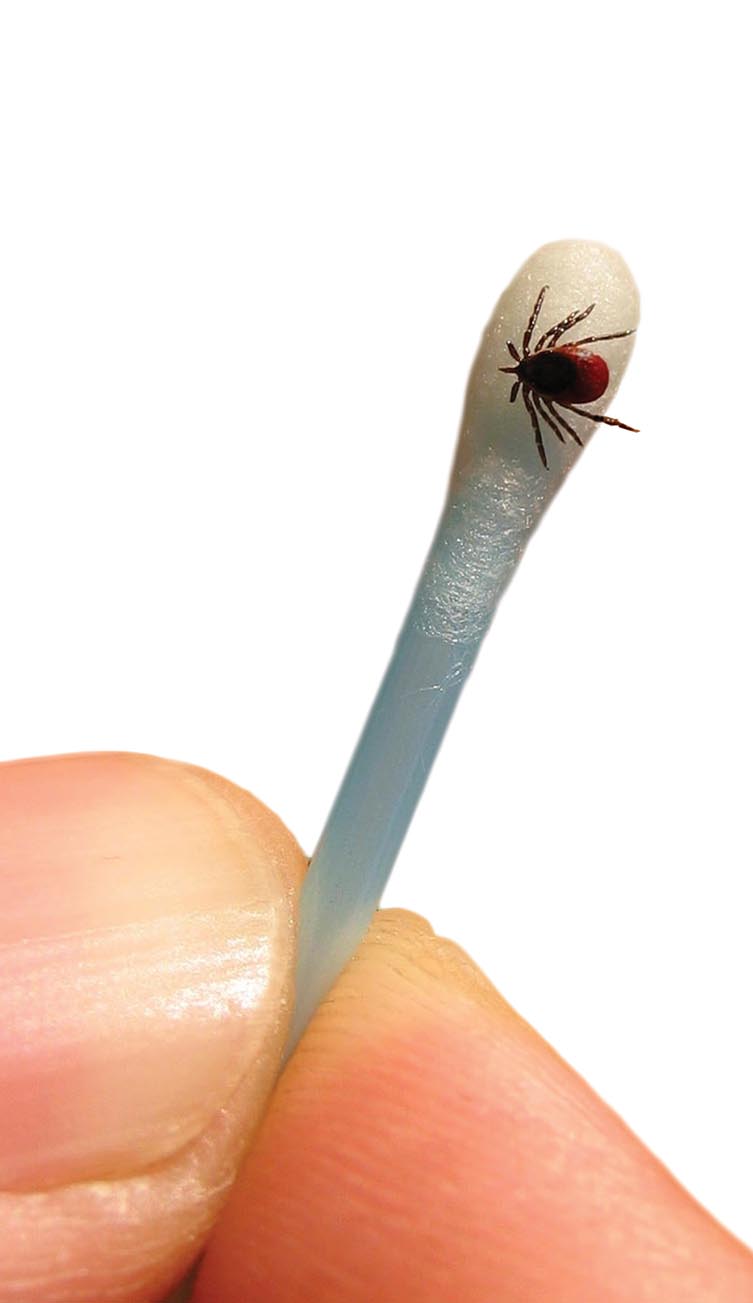Hikers, beware. Tick season is upon us. And this year is shaping up to be one of the most severe on record.
From 2005-2015, the average number of patients with complaints or diagnoses of tick-related illness seen at Erlanger Health System's four Chattanooga locations was 55. In 2016, that number jumped to 154.
Winters too warm to kill the arachnids are partially to blame, explains Bonnie Deakins, director of environmental health at the Chattanooga-Hamilton County Health Department. But low acorn production could also play a role, adds Chris Moore, a local emergency room doctor and former board member of the international Wilderness Medical Society. Fewer acorns means fewer mice, which feed on the nuts. Fewer mice, in turn, means less critters for ticks to feed on, making humans more of a target.
With these factors repeating again this year - Erlanger reported 54 tick-related cases between January and May alone - this summer is expected to be brutal. Experts recommend avoiding heavily wooded areas. But since that isn't even an option for Chattanooga's band of intrepid nature-lovers, we worked with Deakins and Moore to bring you a comprehensive guide to all things tick.
WHAT YOU SHOULD DO:
Before your hike:
» Cover everything in bug repellent. Not just your clothes, but any backpacks, sleeping bags or other gear you may be carrying, as well. Both Moore and Deakins recommend a repellent with at least 20 percent picaridin or DEET, which the EPA has approved as safe for consumers.
» Wear clothing with coverage. This will make it easier to check yourself and others for ticks.
» Wear long-sleeve clothing. Some might be hesitant because of the Chattanooga heat, but long sleeves, as well as tucking the legs of your pants into your socks, can reduce your chances of becoming a summer snack.
During your hike:
» Stay in the center of the trail, away from the brush and leaf litter toward the edges and off the trail, where ticks often hide.
» Relax. Ticks attach themselves to the underside of leaves so they can attach to whomever brushes by them, meaning there's little you can do to avoid them, Moore says. Don't let paranoia ruin your hike; be confident that you've taken the necessary precautions and be extra vigilant when you return home.
REMOVING A TICK
You may be familiar with many tick-removal myths, like painting the pest with nail polish or burning it to make it detach, but both Moore and Deakins say all you really need to pry a feeding tick from your skin are a pair of fine-tipped tweezers and a steady hand. » Use the tweezers to grab the tick as close to the skin's surface as possible. This will ensure you remove the head as well as the body, Deakins says. If you don't have tweezers on hand, Moore recommends using your fingers. The key is just to get the tick out as early as possible. » Pull the tick out gently using firm pressure. Don't twist or jerk it; you could tear off pieces of its mouth, leaving them stuck in the skin. » Check for remnants, then clean the area with soap and water or alcohol as soon as possible.
After your hike:
» Examine yourself thoroughly. Leave no body part unchecked! Experts believe a tick must be embedded in the skin for at least 24 hours before it can transmit a disease, so hop in the shower for a more thorough inspection or have someone else check places you can't easily see yourself, like your hair.
» Check your gear and your pets. Both could be harboring ticks that may come back to bite you later.
» Burn them all. If you don't have time to wash your clothes right away, tumble dry them on high heat to kill any ticks. Leave your clothes in the dryer for at least 10-15 minutes for complete extermination.
LOCAL SPECIES (shown left to right above)
American dog tick:
Commonly known as the "wood tick," this little guy transmits tularemia and Rocky Mountain spotted fever, the tick-borne disease most common in our area.
Brown dog tick:
Found throughout the continental U.S., these ticks also transmit Rocky Mountain spotted fever, though they prefer to sink their teeth into dogs.
Blacklegged tick:
More commonly known as "deer ticks," these pests are responsible for spreading Lyme disease, the most prevalent and well-known tick-borne virus, as well as the rare but deadly Powassan virus.
Lone Star tick:
Named for the silvery-white spot on the females' back, this species has a reputation for aggressive feeding. They transmit diseases less common in our area, such as ehrlichiosis and tularemia.
DISEASES:
There are more than 15 illnesses that can be transmitted by ticks. Here are the few Deakins and Moore say are most common in the Chattanooga area or ones residents should be the most worried about.
Rocky Mountain spotted fever
Though first identified in the Rocky Mountains, this bacterial infection now runs rampant throughout the Southeast. If left untreated, it can cause severe damage to internal organs.
Symptoms: Initial symptoms usually include a fever, headache and vomiting, and a rash sometimes appears 2-5 days after the first symptoms have manifested.
Manifestation time: 2-14 days
Treatment: Antibiotics are often effective if started before the fifth day of symptoms.
Lyme disease
This is no doubt the most commonly reported tick-borne disease in the U.S. The Centers for Disease Control estimates that 300,000 people are diagnosed with this bacterial infection each year, but experts believe that number should be much higher since many are misdiagnosed with other conditions.
Symptoms: Initial symptoms include a bull's-eye shaped rash which has a ring around a centralized red area. Then, fever and malaise set in, with more serious symptoms like arthritic pain and heart palpitations coming later.
Manifestation time: 3-30 days
Treatment: Most fully recover if treated with antibiotics in the illness's early stages, though in a small percentage of patients, symptoms may persist for more than six months.
Tick paralysis
Unlike other tick-borne illnesses, this condition can be felt as quickly as a few hours after the bite since it is not trasmitted through bacteria or other pathogens. Instead, it is caused by a toxin in the saliva of gestating female ticks that impairs nerve function. The condition is rare, though more likely to occur in children, supposedly because of their small mass.
Symptoms: Temporary weakness, and paralysis that begins in the lower extremities and works its way up. The condition can be fatal if respiratory muscles become paralyzed and the victim is unable to breathe.
Manifestation time: 1-7 days
Treatment: Symptoms automatically begin to dissipate after doctors find and remove the tick.
Powassan virus
Though only 75 cases of this disease were reported in the Northeast and Great Lakes region over the last 10 years, Moore warns that more cases of this rare disease will be seen this year, and could even be seen here, as tick populations increase.
Symptoms: Fever, headache, vomiting and other flu-like symptoms, which could lead to misdiagnosis. More severe symptoms include seizures, loss of coordination and memory loss. Long-term neurological damage may occur.
Manifestation time: 7-30 days
Treatment: According to the CDC, there is no specific treatment, but those with severe cases will need to be hospitalized to receive respiratory support or medications to reduce swelling in the brain.
Don't forget Fido
Your pets are just as susceptible to tick bites and illness as you are. Check them within 24 hours of exposure to wooded areas and pay close attention if they stop eating or become lethargic, which could be signs of a tick-related illness. Consult your vet before choosing a specific insect repelling collar or spray for extra protection.


